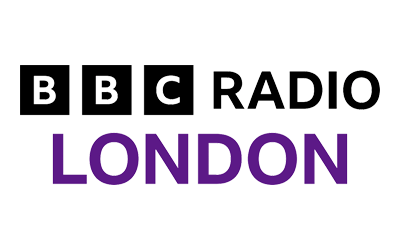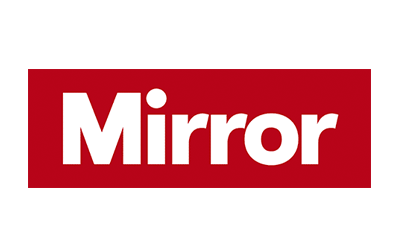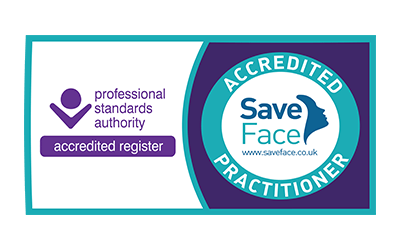Ultherapy is the only non-invasive procedure FDA-cleared to lift skin on the neck, under the chin and on the eyebrow. For more information on the procedure, here are our Ultherapy FAQs. If you’d like any more information, call 02037 335839 to speak to one of the team or arrange a consultation.
Quick Links
Ultherapy FAQs
Ultherapy is a non-surgical, non-invasive treatment that uses focused ultrasound energy from a device to cause very precise and specific deep tissue heating without disturbing the surface of the skin. As a result of this heating the tissues undergo ‘remodelling’ which leads to new collagen formation, shrinkage and firming, with tightening of the skin and deeper muscle layers.
Ultherapy uses ultrasound imaging so when the practitioner places the handset on the area that is to be treated, they can see the tissue on screen and target focused ultrasound beams at the right depth below the skin. This targeting and rapid heating of the tissues prompts cell renewal beneath the skin and prompts the body to respond by producing more elastin and collagen, restoring the skin’s underlying tissue and rejuvenating and tightening the skin. Ultherapy is the only FDA-cleared procedure to ‘lift’ skin on hard-to-treat areas using ultrasound. Treatment takes between 60-90 minutes.
All the studies and initial trials that have been completed for the Ultherapy treatment have been on the face and neck regions, with noticeable results on the brow, cheek, jowl areas in particular. Ulthera was cleared for use on the chest quite recently and according to the manufacturer there is no reason why other parts of the body such as the arms, abdominal or skin above the knee, might not benefit from the Ultherapy treatment. It’s just that not enough formal studies have been done yet to prove its effectiveness in such areas.
Comfort thresholds will vary from patient to patient but you should expect mild to moderate pain during treatment when the ultrasound energy is being delivered. We often try to minimise this by administering combination pain killers 45 minutes prior to the procedure to provide pain relief. At our London clinic, which is based with The Hospital of St John & St Elizabeth, we are able to use some additional pain relief in the form of Entonox (commonly known as gas and air) to help you past any strong levels of discomfort. Once the treatment is completed however there is no pain and patients typically leave comfortable and excited about the benefits to come!
Ultherapy is beneficial for rejuvenating tired-looking or sagging skin, a lowered brow line and other signs of maturing skin. The ideal candidate for Ultherapy is typically someone who has some mild to moderate degree of skin laxity that wants to improve his or her skin firmness and volume and perhaps is not fully ready for a surgical skin tightening procedure such as a face lift. Typically, those in their thirties and early forties who have a good quality of skin are the best candidates. Patients who have more advanced levels of skin laxity (sagging) are sometimes advised to consider a face lift procedure to ensure a better result. Nonetheless patients with more advanced and obvious laxity of the skin-but who have already ruled out an invasive surgical face lift, for any number of reasons, may also benefit from the Ultherapy procedure, however these patients will need to understand that Ultherapy in these circumstances can never mimic or achieve the results obtained with a surgical face lift and therefore have to be prepared to curtail their expectations.
Like many energy based devices, Ultherapy uses the concept of dermal heating to rejuvenate the skin and tissues. To understand this concept you need to appreciate that collagen is one of the main proteins within our skin that gives it its youthfulness, firmness and excellent tone. Unfortunately as the years go by, our skin loses a proportion of its collagen. Recent discoveries over the last few years have found that heating the deeper portions of the skin and deeper tissues to a certain temperature will help to kick start the body’s natural repair process to produce new collagen. In fact by delivering enough heat into the deeper skin layers and beyond, it creates a ‘unique healing process’ through which both mechanical and biochemical effects ultimately lead to an initial contraction or tightening of the collagen fibres. This is then followed by a well-documented wound response with dermal (deep skin) remodelling and ultimately new collagen formation. With this aim in mind, a large number of heating “energy” devices have appeared. Ultherapy is different and unique in that it uses very controlled, focused ultrasound energy directed to the deeper levels of the tissue in order to cause this heat effect.
Ultherapy uses tried-and-true ultrasound technology, which has received American FDA clearance for use in this new type of medical procedure to lift skin on the brow, neck and under the chin. Ultherapy specifically uses Intense Focused Ultrasound (IFU) energy to heat the skin and deeper tissues. The ultrasound energy used is targeted and sharply focused into multiple, very tightly confined spots of about 1 mm² each, deep within the skin, and at different levels, thereby leaving tissue outside its focus completely unaffected. The energy deposited in these confined spots result in what are termed Thermal Injury Zones (TIZ’s). These TIZ’s stimulate a wound healing response which ultimately leads to the development of dermal remodelling and the formation of new collagen.
Experience has shown that achieving consistent clinical efficacy has long been a challenge for any energy based device. Most practitioners agree that existing Radiofrequency, Infra-red and other energy based systems use a bulk heating approach, rather than a precisely targeted one, to cause the aforementioned dermal heating to address skin laxity. Unfortunately, this bulk heating approach produces variable results with some patients experiencing significant improvement and others not much at all. Using Intense Focused Ultrasound energy, Ultherapy by comparison, delivers energy much more accurately, at different levels, and deeper into the skin than other competitive bulk heating and non-invasive fractional devices. This results in more precise dermal and tissue heating and therefore a greater likelihood of new collagen formation, leading to improved skin elasticity and firmness.
Lasers use a light wave based source to direct energy via a laser beam to its target. Depending on the type and wavelength of the laser it has many uses. These include skin resurfacing, hair removal, tattoo removal and facial rejuvenation. Instead of light waves, Ultherapy uses Intense Focused Ultrasound or sound waves to deliver energy to its target tissues. Lasers typically address issues in the superficial layers of the skin (e.g. fine lines, wrinkles, pigment changes). Ultherapy addresses the deep skin layer and the foundational layer addressed in cosmetic surgery that lift and lend support to the skin.
Ultherapy is unique in that it uses Intense Focused Ultrasound to guide energy with pin-point accuracy into tissues thereby heating and stimulating these points while at the same time leaving intervening tissue unaffected. Ultherapy is also the only non-invasive treatment that can specifically target the deep foundation below the skin that is addressed in cosmetic surgery without cutting or disrupting the surface of the skin. In addition it is also the only procedure to concurrently use ultrasound imaging, which allows us to actually see the layers of tissue we target during treatment and ensure the energy is deposited precisely to where it will be most effective.
Before being approved for market use the Ultherapy device underwent over 2 years of laboratory, animal and human cadaver work. In 2008 Ultherapy received a CE mark and in 2009 it received American FDA approval for non-surgical lifting of the brow, neck and jawline. To date well over 100,000 treatments have been performed worldwide. There are already a number of clinical trials and studies that have looked at both the safety and the effectiveness of Ultherapy and which can be sought in the medical literature.
Your practitioner will use the ultrasound applicator on the targeted area, which allows them to see the deeper layers of skin tissue. That image is displayed on the screen to allow the practitioner to deliver a low level of ultrasound energy to the skin at that specified depth. The skin that has been targeted by the ultrasound will be heated, which in turn stimulates the formation of new collagen over a period of time. This will result in the lifting of the tissue and gradual tightening of the skin.
Yes. The colour of skin does not impact on Ultherapy’s effectiveness.
A full face and neck treatment takes 60-90 minutes. A partial face or brow lift treatment can take around 30 minutes.
Because of the precision in which Ultherapy works to deliver the necessary energy to the tissues, the majority of patients only need one treatment. However, very occasionally some may benefit from more than one treatment depending on how much laxity they have and their body’s own biological response to the ultrasound and collagen-building process. This will be assessed at your consultation and follow-up appointment.
Although there may be some very mild swelling, discomfort and possible redness, this usually subsides in the first couple of hours after treatment. There is no recovery time from Ultherapy that would prohibit you i.e. from taking a train or driving home after afterwards. Most patients are also able to return to their daily activities immediately after their treatment.
There may be slight redness for up to an hour or so following the treatment and a small percentage of patients may have slight swelling, tingling or tenderness to touch, but these are mild and temporary in nature. As with any procedure, there is always the possibility for side effects. These however are very uncommon and usually settle without any implication. These can include possible bruising, skin discoloration, prolonged stinging, numbness, or tingling and the appearance of skin welts. Thankfully, if and when these do arise, they are usually temporary and dissipate over the first few days to weeks.
Following the Ultherapy treatment, you may notice a short-term boost but the natural process of creating new, more elastic, collagen will start to be visible between 6-8 weeks post treatment. The interesting thing about Ultherapy is that new collagen requires time to fully develop which means results will continue to improve 4-6 months post treatment with some patients reporting changes up to 12 months post treatment.
Although Ultherapy is relatively new, studies carried out so far have reported effects lasting up to 18 months to 2 years or more. It is therefore conceivable that patients may seek another treatment closer to this time if they feel they would like to maintain their rejuvenated appearance. As with all anti-ageing treatments, time never stands still. You will naturally continue to age according to the laws of time and physics. Interestingly, the improved software and energy settings on the Ulthera devices are allowing us to deliver more energy to the tissues in order to optimise the results even further. As a result it is not unreasonable to suggest that we may in the future find the effects lasting even longer.
No. When there is excessive sagging or laxity in the facial tissues, then the only realistic and feasible option is a surgical facelift to rejuvenate your appearance. When however there is only mild or moderate laxity, then Ultherapy may be the preferred treatment option. It’s important for patients to understand that although the revolumising and skin tightening effects from the new collagen and elastin production in the skin from the Ultherapy treatment will improve skin laxity and some lines and wrinkles, it is simply not as obvious an effect or a substitute for a surgical face lift. As a very rough rule of thumb and for comparative purposes, it probably delivers approximately 25% of the effects of a surgical face lift. Therefore patients must adjust their expectations accordingly. The aim is for an improvement in firmness and laxity of the skin but it does not give the exact lifting effects that a face lift does. Compared to surgical results, it would best be described as more subtle. All expectation and limitations, as well as your suitability will of course be discussed at the consultation.
The answer to this is no. A consultation will be able to establish what would be more suitable for you.
There are very few certainties in life and unfortunately medical treatments are not one of these. Whilst Ultherapy is acknowledged to work by its ability to consistently deliver a specific zone of thermal injury to the deeper skin layers, enabling the well documented and recognised potential for new collagen and elastin production, the only variable left in the skin rejuvenation ‘equation’ is the patients’ healing response. Some patients will simply just respond differently than others, regardless of the technology. Unfortunately we cannot guarantee individual patients’ healing capabilities, nor is there any way we can predict this from the outset. What Ultherapy guarantees is the ability to deliver targeted and well monitored thermal injury to the deeper skin layers, which has proven to result in a unique healing response including new collagen and elastin formation. We can promise that the thermal injury other technologies attempt to achieve will definitely be accomplished with Utherapy.
The answer to this is no. There are a number of variables that can affect the treatment results. Obviously having an experienced trained practitioner perform the treatment is paramount. The key thing in a properly performed Ultherapy treatment is to align the appropriate handset in the correct direction and position so that the focused energy is targeting the skin and where appropriate the underlying muscle. This will avoid ‘wasted’ and incorrectly dissipated energy and reduce any unnecessary pain. Moreover the appropriate recent protocols involving administering more energy to the tissues should also be applied. More energy usually means more effect and therefore better results.
Unfortunately there are very few ‘good’ bargains in life and medical treatments are not usually one of those. Ultherapy treatments involve consumables and costs to any clinic performing this procedure. Every given handset that delivers the energy, is a consumable with considerable expense. It therefore has a given life span in terms of how many ‘shots’ it can deliver. As one can understand it would be quite easy for a treatment to be ‘under delivered’ in order to get more ‘life’ and hence money out of the treatments. Unfortunately the patient may not ever know any better – until the results fail to materialise of course.
Ultherapy is not advised in situations where there is severe laxity of the skin and underlying muscle and fat tissues. It is also not advised in conditions where there is any form of collagen or immune disease, severe thinning of the skin, or gross evidence of sun damage. It is also not very effective in overweight individuals with overfull round faces.
















